
The most distant human-made object

No spacecraft has gone farther than NASA's Voyager 1. Launched in 1977 to fly by Jupiter and Saturn, Voyager 1 crossed into interstellar space in August 2012 and continues to collect data.
Mission Type

What is Voyager 1?
Voyager 1 has been exploring our solar system for more than 45 years. The probe is now in interstellar space, the region outside the heliopause, or the bubble of energetic particles and magnetic fields from the Sun.
- Voyager 1 was the first spacecraft to cross the heliosphere, the boundary where the influences outside our solar system are stronger than those from our Sun.
- Voyager 1 is the first human-made object to venture into interstellar space.
- Voyager 1 discovered a thin ring around Jupiter and two new Jovian moons: Thebe and Metis.
- At Saturn, Voyager 1 found five new moons and a new ring called the G-ring.
In Depth: Voyager 1
Voyager 1 was launched after Voyager 2, but because of a faster route, it exited the asteroid belt earlier than its twin, having overtaken Voyager 2 on Dec. 15, 1977.
Voyager 1 at Jupiter
Voyager 1 began its Jovian imaging mission in April 1978 at a range of 165 million miles (265 million km) from the planet. Images sent back by January the following year indicated that Jupiter’s atmosphere was more turbulent than during the Pioneer flybys in 1973–1974.
Beginning on January 30, Voyager 1 took a picture every 96 seconds for a span of 100 hours to generate a color timelapse movie to depict 10 rotations of Jupiter. On Feb. 10, 1979, the spacecraft crossed into the Jovian moon system and by early March, it had already discovered a thin (less than 30 kilometers thick) ring circling Jupiter.
Voyager 1’s closest encounter with Jupiter was at 12:05 UT on March 5, 1979 at a range of about 174,000 miles (280,000 km). It encountered several of Jupiter’s Moons, including Amalthea, Io, Europa, Ganymede, and Callisto, returning spectacular photos of their terrain, opening up completely new worlds for planetary scientists.
The most interesting find was on Io, where images showed a bizarre yellow, orange, and brown world with at least eight active volcanoes spewing material into space, making it one of the most (if not the most) geologically active planetary body in the solar system. The presence of active volcanoes suggested that the sulfur and oxygen in Jovian space may be a result of the volcanic plumes from Io which are rich in sulfur dioxide. The spacecraft also discovered two new moons, Thebe and Metis.
Voyager 1 at Saturn
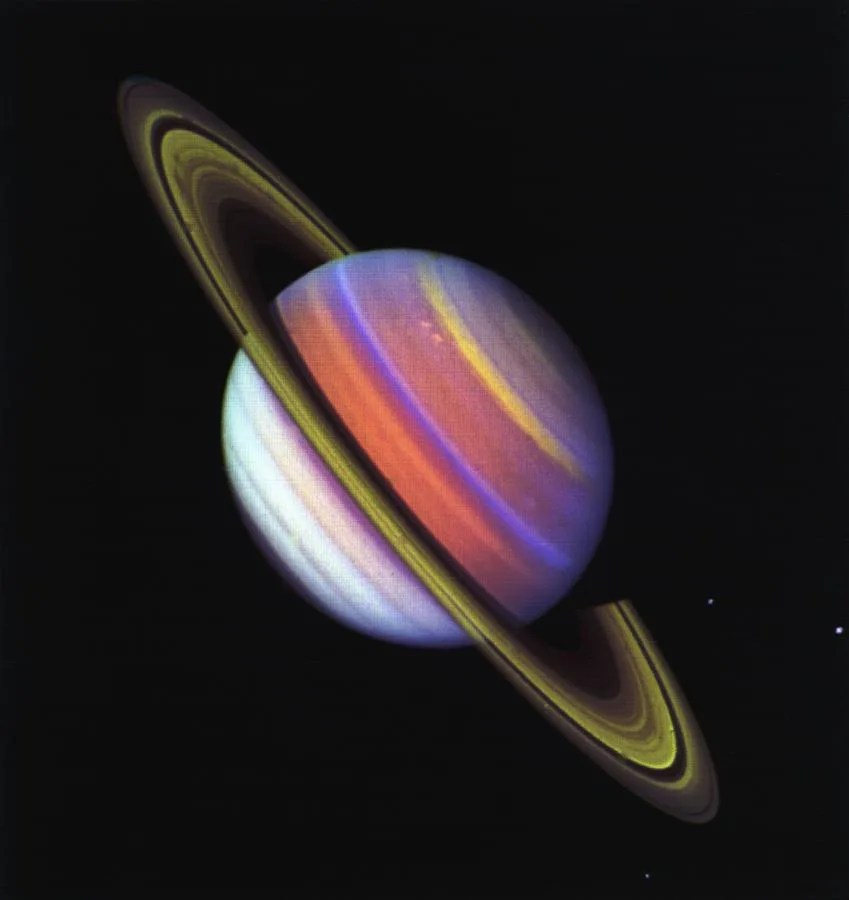
Following the Jupiter encounter, Voyager 1 completed an initial course correction on April 9, 1979 in preparation for its meeting with Saturn. A second correction on Oct. 10, 1979 ensured that the spacecraft would not hit Saturn’s moon Titan.
Its flyby of the Saturn system in November 1979 was as spectacular as its previous encounter. Voyager 1 found five new moons, a ring system consisting of thousands of bands, wedge-shaped transient clouds of tiny particles in the B ring that scientists called “spokes,” a new ring (the “G-ring”), and “shepherding” satellites on either side of the F-ring—satellites that keep the rings well-defined.
During its flyby, the spacecraft photographed Saturn’s moons Titan, Mimas, Enceladus, Tethys, Dione, and Rhea. Based on incoming data, all the moons appeared to be composed largely of water ice. Perhaps the most interesting target was Titan, which Voyager 1 passed at 05:41 UT on November 12 at a range of 2,500 miles (4,000 km). Images showed a thick atmosphere that completely hid the surface. The spacecraft found that the moon’s atmosphere was composed of 90% nitrogen. Pressure ad temperature at the surface was 1.6 atmospheres and 356 °F (–180°C), respectively.
Atmospheric data suggested that Titan might be the first body in the solar system (apart from Earth) where liquid might exist on the surface. In addition, the presence of nitrogen, methane, and more complex hydrocarbons indicated that prebiotic chemical reactions might be possible on Titan.
Voyager 1’s closest approach to Saturn was at 23:46 UT on 12 Nov. 12, 1980 at a range of 78,000 miles(126,000 km).
Voyager 1’s ‘Family Portrait’ Image
Following the encounter with Saturn, Voyager 1 headed on a trajectory escaping the solar system at a speed of about 3.5 AU per year, 35° out of the ecliptic plane to the north, in the general direction of the Sun’s motion relative to nearby stars. Because of the specific requirements for the Titan flyby, the spacecraft was not directed to Uranus and Neptune.
The final images taken by the Voyagers comprised a mosaic of 64 images taken by Voyager 1 on Feb. 14, 1990 at a distance of 40 AU of the Sun and all the planets of the solar system (although Mercury and Mars did not appear, the former because it was too close to the Sun and the latter because Mars was on the same side of the Sun as Voyager 1 so only its dark side faced the cameras).
This was the so-called “pale blue dot” image made famous by Cornell University professor and Voyager science team member Carl Sagan (1934-1996). These were the last of a total of 67,000 images taken by the two spacecraft.
Voyager 1’s Interstellar Mission
All the planetary encounters finally over in 1989, the missions of Voyager 1 and 2 were declared part of the Voyager Interstellar Mission (VIM), which officially began on Jan. 1, 1990.
The goal was to extend NASA’s exploration of the solar system beyond the neighborhood of the outer planets to the outer limits of the Sun’s sphere of influence, and “possibly beyond.” Specific goals include collecting data on the transition between the heliosphere, the region of space dominated by the Sun’s magnetic field and solar field, and the interstellar medium.
On Feb. 17, 1998, Voyager 1 became the most distant human-made object in existence when, at a distance of 69.4 AU from the Sun when it “overtook” Pioneer 10.
On Dec. 16, 2004, Voyager scientists announced that Voyager 1 had reported high values for the intensity for the magnetic field at a distance of 94 AU, indicating that it had reached the termination shock and had now entered the heliosheath.
The spacecraft finally exited the heliosphere and began measuring the interstellar environment on Aug. 25, 2012, the first spacecraft to do so.
On Sept. 5, 2017, NASA marked the 40th anniversary of its launch, as it continues to communicate with NASA’s Deep Space Network and send data back from four still-functioning instruments—the cosmic ray telescope, the low-energy charged particles experiment, the magnetometer, and the plasma waves experiment.
The Golden Record

Each of the Voyagers contain a “message,” prepared by a team headed by Carl Sagan, in the form of a 12-inch (30 cm) diameter gold-plated copper disc for potential extraterrestrials who might find the spacecraft. Like the plaques on Pioneers 10 and 11, the record has inscribed symbols to show the location of Earth relative to several pulsars.
The records also contain instructions to play them using a cartridge and a needle, much like a vinyl record player. The audio on the disc includes greetings in 55 languages, 35 sounds from life on Earth (such as whale songs, laughter, etc.), 90 minutes of generally Western music including everything from Mozart and Bach to Chuck Berry and Blind Willie Johnson. It also includes 115 images of life on Earth and recorded greetings from then U.S. President Jimmy Carter (1924– ) and then-UN Secretary-General Kurt Waldheim (1918–2007).
By January 2024, Voyager 1 was about 136 AU (15 billion miles, or 20 billion kilometers) from Earth, the farthest object created by humans, and moving at a velocity of about 38,000 mph (17.0 kilometers/second) relative to the Sun.

National Space Science Data Center: Voyager 1
A library of technical details and historic perspective.

Beyond Earth: A Chronicle of Deep Space Exploration
A comprehensive history of missions sent to explore beyond Earth.

Discover More Topics From NASA

Our Solar System

- Subscribe to BBC Science Focus Magazine
- Previous Issues
- Future tech
- Everyday science
- Planet Earth
- Newsletters
Voyager 1: a brief history of the interstellar spacecraft
Launched into space in 1977 to study the outer planets, Voyager 1 has become the first man-made object to leave the Solar System. To celebrate its incredible achievement, we look back at the highlights of its epic journey.
James Lloyd
1977: Launch
NASA’s Voyager 1 spacecraft lifted off from Florida’s Cape Canaveral Air Force Station on 5 September 1977, a couple weeks after the launch of its sister craft, Voyager 2. Equipped with a toolbox of television cameras, infrared and ultraviolet sensors, and various other instruments, the spacecraft are still travelling through space today. They’re powered by ‘radioisotope thermoelectric generators’, which convert the heat produced by the radioactive decay of plutonium into electricity.

Also onboard each spacecraft is a ‘ Golden Record ’ that contains sounds, music and images from Earth, intended for any aliens or future humans who chance upon the craft. Sounds engraved into the copper vinyl include nature recordings of birdsong, thunder and wind, greetings in more than 50 languages, and music by artists including Bach, Chuck Berry, Beethoven, Blind Willie Johnson and Mozart.
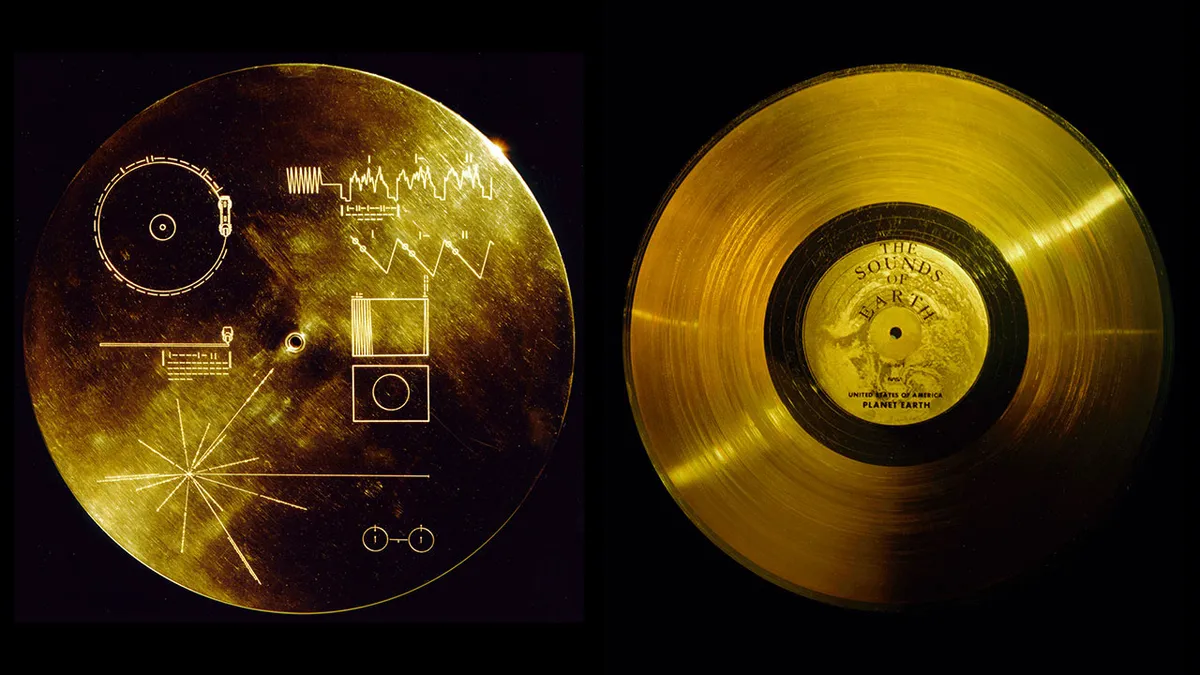
1979: Encounter with Jupiter
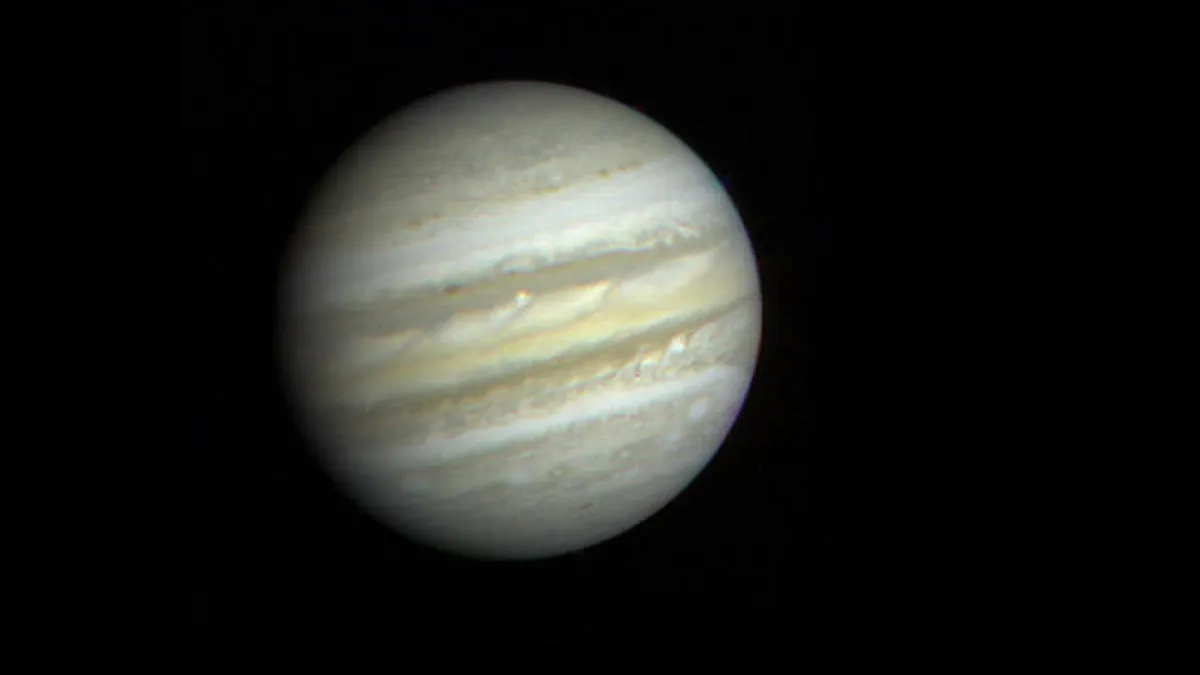
The spacecraft’s first stop was Jupiter. Voyager 1 began photographing the Jovian giant in January 1979, making its closest approach a couple months later. It took some spectacular shots of the famous Great Red Spot – a perpetual storm that’s large enough to engulf three Earths – and discovered volcanic activity on Io, Jupiter’s innermost moon. It was the first time that active volcanoes had been discovered anywhere else in the Solar System.

1980: Encounter with Saturn
Next stop on Voyager 1’s cosmic odyssey was Saturn and its system of moons and rings. It made its closest approach to the gas giant on 12 November 1980, coming within 64,200 kilometres (40,000 miles) of the planet’s cloud tops. It sent back the first high-resolution shots of Saturn’s rings and discovered that the planet’s gassy atmosphere was made almost entirely of hydrogen and helium, making it the only planet less dense than water. It also took close-up shots of some of Saturn’s many moons.
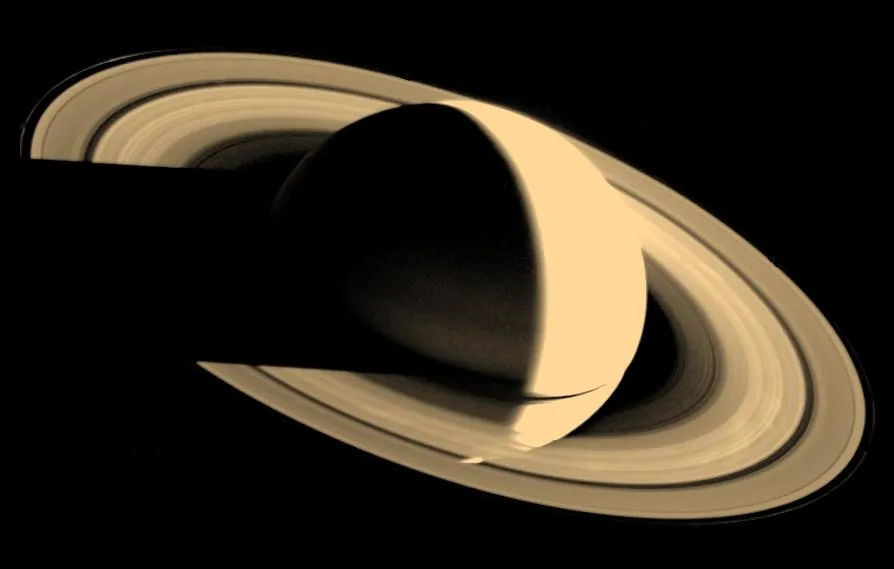
1990: The ‘Pale Blue Dot’

Having fulfilled its primary mission, Voyager 1 continued to streak through space. In 1990, the spacecraft turned its camera back towards the Earth to capture this humbling shot.
In this image, the Earth appears as a miniscule blue speck suspended against the blackness of space. It’s just about visible as a tiny dot approximately halfway down the brown band of light on the right. The light bands are artifacts of the photo, a result of sunlight scattering off the camera.
The American astronomer Carl Sagan poignantly wrote about the photo in his book Pale Blue Dot: A Vision of the Human Future in Space :
“Consider again that dot. That's here. That's home. That's us. On it everyone you love, everyone you know, everyone you ever heard of, every human being who ever was, lived out their lives... every saint and sinner in the history of our species lived there– on a mote of dust suspended in a sunbeam.”
2012: Entering interstellar space
Voyager 1 officially entered the space between stars – ‘interstellar space’ - on August 2012, going beyond the influence of the Sun’s magnetic field and ‘solar wind’ of charged particles. This means that it's the first man-made object ever to leave the Solar System.
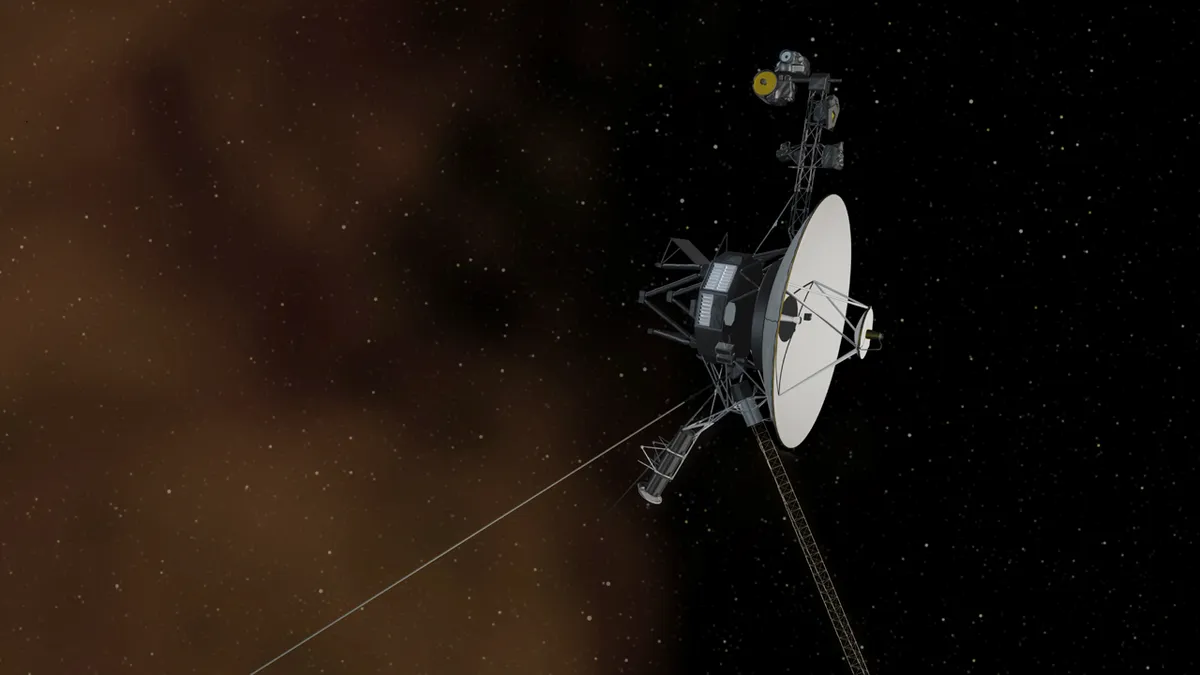
“This is really a key milestone that we'd been hoping we would reach when we started this project over 40 years ago,” chief scientist Prof Ed Stone told BBC News. “[It’s] one of those journeys of exploration like circumnavigating the globe for the first time or having a footprint on the Moon for the first time.”
Today, 40 years after its launch, Voyager 1’s radioactive power source is still going strong. The spacecraft is currently around 19 billion kilometres (12 billion miles) from home, and its radio signals take 17 hours to reach us.
The future: Voyager continues on its adventure
It's expected that Voyager 1 will exhaust its plutonium power supply in around 2025, at which point it’ll end its broadcasts back to Earth.
But its journey won’t end there – it'll still continue to orbit the centre of our Milky Way, and is next due to encounter a star in 40,000 years time. With its communication cut off, though, only Voyager will know how it feels to be so far from home, basking in the glory of another sun.
Follow Science Focus on Twitter , Facebook , Instagram and Flipboard
Share this article
Staff writer, BBC Science Focus

- Terms & Conditions
- Privacy policy
- Cookies policy
- Code of conduct
- Magazine subscriptions
- Manage preferences

IMAGES
VIDEO
COMMENTS
Its flyby of the Saturn system in November 1979 was as spectacular as its previous encounter. Voyager 1 found five new moons, a ring system consisting of thousands of bands, wedge-shaped transient clouds of tiny particles in the B ring that scientists called “spokes,” a new ring (the “G-ring”), and “shepherding” satellites on either side of the F-ring—satellites that keep the ...
Voyager 1 is a space probe launched by NASA on September 5, 1977, as part of the Voyager program to study the outer Solar System and the interstellar space beyond the Sun's heliosphere. It was launched 16 days after its twin Voyager 2.
Launched into space in 1977 to study the outer planets, Voyager 1 has become the first man-made object to leave the Solar System. To celebrate its incredible achievement, we look back at the highlights of its epic journey.
Voyager 1, robotic U.S. interplanetary probe launched in 1977 that visited Jupiter and Saturn and was the first spacecraft to reach interstellar space. Voyager 1 swung by Jupiter on March 5, 1979, and then headed for Saturn, which it reached on November 12, 1980.